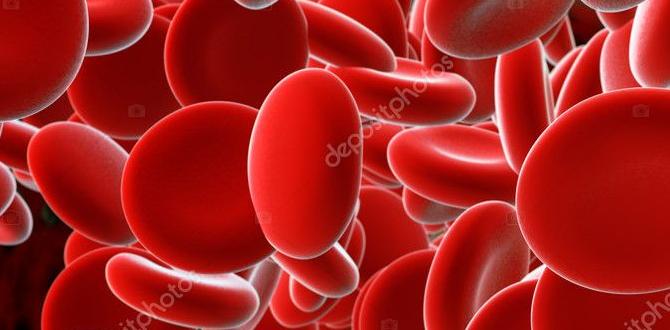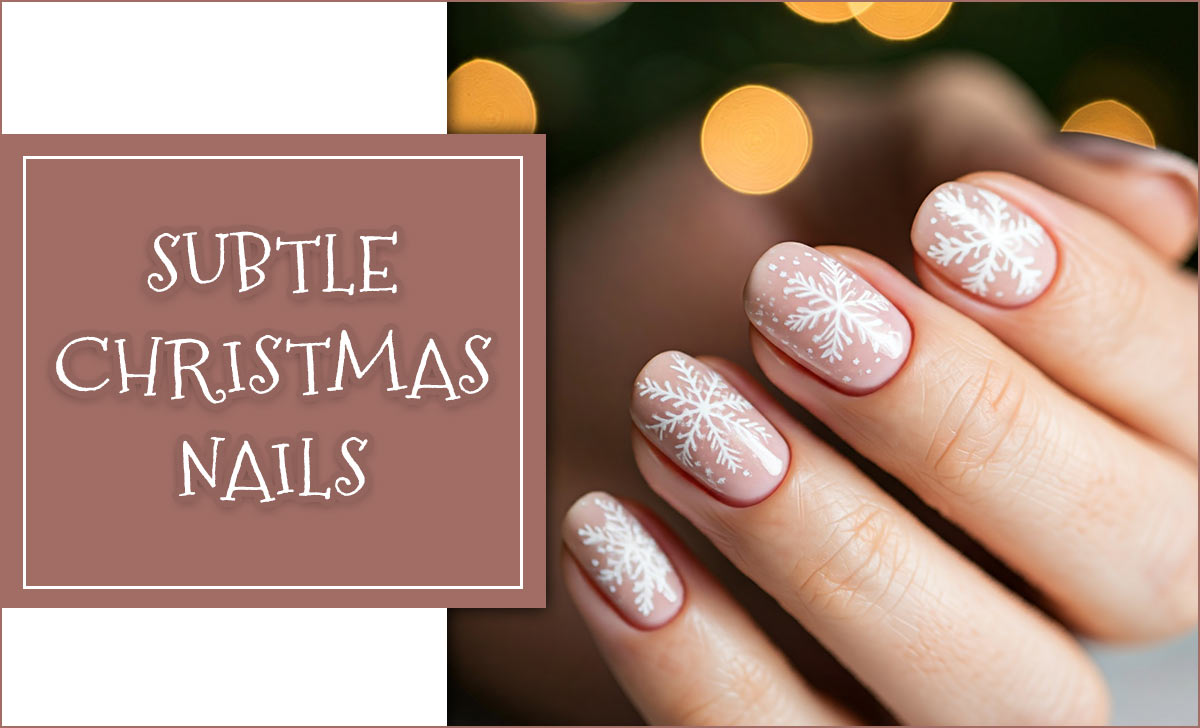No tools simple nail designs are totally achievable! You can create stunning, artistic nails using just polish, everyday items, and a little creativity. Forget costly kits – stunning nail art is beginner-friendly and budget-proof.
Ever scroll through gorgeous nail art online and think, “There’s no way I can do that without a million tiny brushes”? I get it! It can feel super intimidating when you’re just starting out. You might think you need fancy tools for intricate designs, but I’m here to tell you that’s just not true. You can absolutely create beautiful, eye-catching nail art with things you probably already have at home. We’re talking effortless techniques that look like you spent hours at a salon, but they’re actually super simple to do yourself. Get ready to discover how to transform your nails into tiny works of art, no special equipment required!
Unlock Your Inner Nail Artist: The Magic of No-Tool Designs
The world of nail art doesn’t require a specialized toolkit. Many of the most creative and visually appealing designs can be achieved with items commonly found in your home. This approach is perfect for beginners who want to experiment without investing in expensive supplies. It’s all about using what you have and letting your creativity flow. Think of this as your entry point into the fun and expressive world of DIY manicures, where stunning results are within everyone’s reach.
Why Go Tool-Free for Nail Designs?
There are so many reasons why embracing no-tool nail designs is a fantastic idea, especially when you’re just dipping your toes into nail art:
- Accessibility: Anyone can try these designs! No need to hunt down special dotting tools, striping brushes, or stamping plates.
- Budget-Friendly: Save your money! You can create amazing looks using just nail polish and household items.
- Convenience: Create art on the go or at home without needing a dedicated nail art station. Last-minute mani? No problem!
- Creativity Boost: These methods encourage you to think outside the box and find art in everyday objects.
- Beginner-Friendly: The techniques are simple to learn and master, leading to quick, satisfying results.
- Less Clutter: Keep your beauty space tidy. You don’t need to store a lot of specialized equipment.
Essential (But Not Special) Supplies for Stunning No-Tool Nail Art
Before we dive into the fun designs, let’s talk about what you’ll need. Don’t worry, it’s probably already in your bathroom, at your desk, or in the kitchen!
The Foundation: Your Nail Polishes
This is your primary artistic medium! Having a good collection of nail polishes in various finishes and colors will open up a world of possibilities. Consider:
- Base Coat: Protects your natural nails and helps polish adhere better.
- Top Coat: Seals your design, adds shine, and prevents chipping.
- Color Polishes: The stars of the show! Mix and match, layer, and experiment.
- Quick-Dry Formulas: These can be a lifesaver when you’re short on time or need layers to dry fast.
Your Everyday “Tools”
These are the unsung heroes of no-tool nail art. Get creative with what you have!
- Toothpicks: Perfect for small dots, fine lines, and even creating tiny floral patterns.
- Bobby Pins: The rounded end can create dots of various sizes, and the flat end can be used for sweeping or blending colors.
- Hairpins (U-shaped): Similar to bobby pins, the rounded ends are great for dots.
- Pen/Pencil Erasers (new ones are best!): The flat surface of a clean eraser can create perfect circles or broad strokes.
- Paper Clips: Unfold them to create custom line tools or use the rounded end for larger dots.
- Scotch Tape/Masking Tape: Essential for creating crisp lines, geometric patterns, and French tips.
- Cotton Swabs (Q-tips): For cleaning up edges, creating soft smudges, or even making textured effects.
- Makeup Sponges: Ideal for gradients, ombre effects, and textured looks.
- Plastic Wrap/Cellophane: Use it to create a beautiful, marbled, or textured effect.
- Needle (Sewing needle): A finer point than a toothpick for very delicate lines.
Important Extras
- Nail Polish Remover: For inevitable oops moments and cleanup.
- Cotton Balls/Pads: For applying remover.
- Lint-Free Wipes: To avoid fuzzies when cleaning.
Effortless & Stunning: Step-by-Step No-Tool Nail Designs
Let’s get down to the fun part! These designs are super easy and require no special skills. Grab your polishes and your everyday items!
Design 1: The Perfect Dot Mania
Dots are classic for a reason – they’re simple, chic, and endlessly versatile. You can create polka dots, scattered dots, or even build them into patterns.
What you’ll need: Nail polish, toothpick or bobby pin, top coat.
- Prep: Apply a base coat, followed by your desired base color. Let it dry completely.
- Dotting: Dip the tip of your toothpick or the rounded end of a bobby pin into a contrasting polish color.
- Apply: Gently press the loaded tip onto your nail to create a dot. Wiggle it slightly if needed to get a clean circle.
- Repeat: Continue adding dots, spacing them as you like. You can create a uniform pattern or a scattered “confetti” look. For smaller dots, use less polish; for larger dots, use a bit more.
- Dry: Allow the dots to dry thoroughly.
- Seal: Apply a generous layer of top coat to smooth out the dots and add shine. Be careful not to smush the dots!
Design 2: Speedy Stripes with Tape
Sharp, clean lines look incredibly professional but are surprisingly easy with tape. Geometric patterns are always in vogue!
What you’ll need: Nail polish, scotch tape or masking tape, nail polish remover, cotton swab, top coat.
- Base: Apply and let your first nail polish color dry completely. This is crucial for clean lines.
- Tape: Cut small strips of tape and carefully apply them to your nail, creating the shapes for your stripes. Ensure the tape is pressed down firmly along all edges to prevent polish from bleeding underneath.
- Paint Over: Apply your second color of nail polish over the taped area. You can do one stripe, or cover the entire nail with the second color over the tape.
- Remove Tape: While the second color is still wet (this is key!), carefully peel off the tape. This reveals the crisp line you’ve created.
- Clean Up: Use a cotton swab dipped in nail polish remover to clean up any small smudges or stray polish around the edges.
- Dry & Seal: Let the polish dry completely, then apply a top coat for longevity and shine.
Design 3: The Effortless Glitter Gradient
Glitter gradients are forgiving and always festive. They’re perfect for adding a touch of sparkle without intricate work.
What you’ll need: Base polish, glitter polish, makeup sponge or cotton swab, top coat.
- Base Coat: Apply and let your base color dry.
- Sponge Technique: Lightly dampen a corner of your makeup sponge. Apply a line of your glitter polish directly onto the sponge.
- Gradient Application: Gently dab the sponge near the tip of your nail. The glitter will transfer. You can dab it straight across for a full glitter tip, or dab closer to the free edge and gradually move up the nail for a gradient effect. Reapply glitter polish to the sponge as needed for more intensity.
- Seamless Blend (Optional): Once the glitter is in place, you can use a clean, dry part of the sponge, or a cotton swab, to gently blend the edge where the glitter meets the base color.
- Dry: Let the glitter dry fully. Glitter can sometimes feel bumpy.
- Smooth & Seal: Apply a thick, smooth layer of top coat. This will fill in the gaps between the glitter particles and create a smooth, professional finish. You might need two layers of top coat for a super smooth feel.
Design 4: Marbled Magic with Household Plastic
This technique gives a stunning, unique marbled effect that looks complex but is surprisingly simple.
What you’ll need: Base polish, 2-3 contrasting polish colors, crumpled plastic wrap or a small piece of cellophane, top coat.
- Base: Apply your base color and let it dry completely.
- Apply Colors: On a piece of paper or a disposable surface, place a few small drops of each of your chosen contrasting polishes next to each other.
- Crumple & Dab: Crumple a piece of plastic wrap or cellophane into a loose ball.
- Pick Up Polish: Gently press the crumpled plastic wrap into the drops of polish, picking up some of each color.
- Transfer Design: Lightly dab the loaded plastic wrap onto your nail. Don’t press too hard or rub; gentle dabbing creates the marbled effect.
- Add More Color (if needed): If you want to add more color or intensity, pick up more polish on a clean section of the plastic wrap and dab again.
- Dry & Seal: Let the design dry thoroughly before applying a generous top coat.
Design 5: The Chic French Tip Hack
Forget the shaky hand! A simple hack makes perfect French tips achievable without a steady hand or special brush.
What you’ll need: Base polish, white or color polish for tips, scotch tape or masking tape, nail polish remover, cotton swab, top coat.
- Prep: Apply base coat and your nude or sheer pink base color polish. Let it dry completely.
- Cut the Tape: Cut a strip of tape and fold it in half. Then, cut a curve into the folded edge. When unfolded, this strip will have a slightly curved gap in the middle.
- Position Tape: Carefully place the tape strip across your nail, aligning the curved edge where you want the white tip to start. Ensure the tape is pressed down firmly.
- Paint the Tip: Apply your white or colored polish over the exposed tip area of your nail.
- Remove Tape Gently: While the tip polish is still wet, carefully peel off the tape. If you wait until it’s dry, you risk pulling off the polish.
- Clean Up: Use a cotton swab dipped in nail polish remover to clean up any stray marks or uneven edges.
- Dry & Seal: Let the tip dry completely and then apply your top coat.
Design 6: Ombre/Gradient with a Sponge
Achieve that beautiful blended look with a simple makeup sponge.
What you’ll need: Base polish, 2-3 complementary polish colors, makeup sponge, small piece of foil or plastic, top coat, nail polish remover.
- Base Coat: Apply and let your base color dry.
- Prepare Your Palette: On a piece of foil or plastic, draw a few stripes of your chosen polish colors, touching each other.
- Load the Sponge: Lightly dab the edge of your makeup sponge onto the stripes of color, picking up all the colors.
- Apply to Nail: Gently press the sponge onto the nail, starting from the free edge and moving upwards, “stamping” the color. You want to blend the colors together as you dab.
- Repeat: Reapply polish to the sponge and repeat the dabbing process until you achieve the desired depth and blend.
- Clean Up Edges: Use a small brush or cotton swab dipped in nail polish remover to clean up any polish that got onto your skin.
- Seal It: Once dry, apply a clear top coat to give it a glossy finish.
Pro Tips for Tool-Free Nail Art Success
Even with the simplest techniques, a few tips can elevate your DIY nail art game:
- Patience is Key: Always let each layer of polish dry completely before moving to the next step, especially when using tape. Rushing leads to smudges and messy lines.
- Thin Layers are Better: Multiple thin coats of polish will dry faster and look smoother than one thick, gloopy coat.
- Clean Your “Tools”: If using something like a bobby pin or toothpick repeatedly, wipe off excess polish with a paper towel or cotton pad to keep your dots and lines clean.
- Practice Makes Perfect: Don’t get discouraged if your first attempt isn’t salon-perfect. The more you practice, the steadier your hand will become, and the better you’ll get at controlling the pressure and application.
- Embrace Imperfection: Sometimes the “mistakes” add character! A slightly imperfect dot or a handmade-looking line can add a unique, artistic touch.
- Work in a Well-Ventilated Area: Always do your nail painting somewhere with fresh air, especially when using multiple polishes and removers. The volatile organic compounds (VOCs) found in many nail products can be harmful.
- Don’t Forget the Top Coat: This is your sealing agent. It not only adds shine but also protects your design from chipping and wear.
When Do I Need Actual Nail Art Tools?
While tool-free designs are fantastic, there comes a point when specialized tools can make certain techniques easier or allow for more detailed work. Here’s a quick look:
| Design Complexity | No-Tool Alternative | Specialized Tool Recommendation | When to Consider the Tool |
|---|---|---|---|
| Very Small Dots / Detailed Lines | Toothpick, needle | Dotting tools (various sizes) | Want very precise, uniform, or intricate dot patterns; creating fine details. |
| Long, Crisp Stripes / Geometric Shapes | Scotch tape, masking tape | Striping tape, nail art brushes (long, thin) | Creating complex geometric patterns or very fine, consistent lines. |
| Intricate Stamping Designs | N/A (very difficult without tools) | Stamping plates, stamper, scraper | Want to recreate specific, detailed images or patterns quickly. |
| Smooth Ombre / Blending | Makeup sponge, cotton swab | Airbrush kit, makeup sponge (specialized shapes) | Achieving seamless, airbrushed-like gradients or color melts. |
| Fingerprint/Textured Effects | Plastic wrap, cellophane | Textured stamping plates, specialized brushes | Want specific, repeatable textures or control over the pattern. |
For most beginner-friendly and everyday looks, the kitchen drawer and bathroom cabinet are more than enough! Specialized tools are for when you want to push your creativity even further or achieve a specific effect that’s hard to replicate otherwise.
Frequently Asked Questions (FAQ)
Q1: What is the easiest nail design to do without tools?
The easiest design is a single color manicure with a good base and top coat. If you want a bit of flair, simple polka dots using a toothpick or bobby pin are also incredibly easy and look great!
Q2: Can I really make my nail polish look professional using household items?
Absolutely! With a steady hand, patience, and the right household items like tape for clean lines or a sponge for gradients, you can achieve polished, professional-looking results. It’s all about technique and letting the items do the work.
Q3: How do I prevent my nail polish from chipping when I do nail art?
A good quality base coat is essential to protect your nails and help polish adhere. Always apply thin coats, allow them to dry fully, and finish with at least one, sometimes two, layers of a good, thick top coat. Seal the free edge of your nail (the very tip) by running the brush horizontally across it with your top coat.



